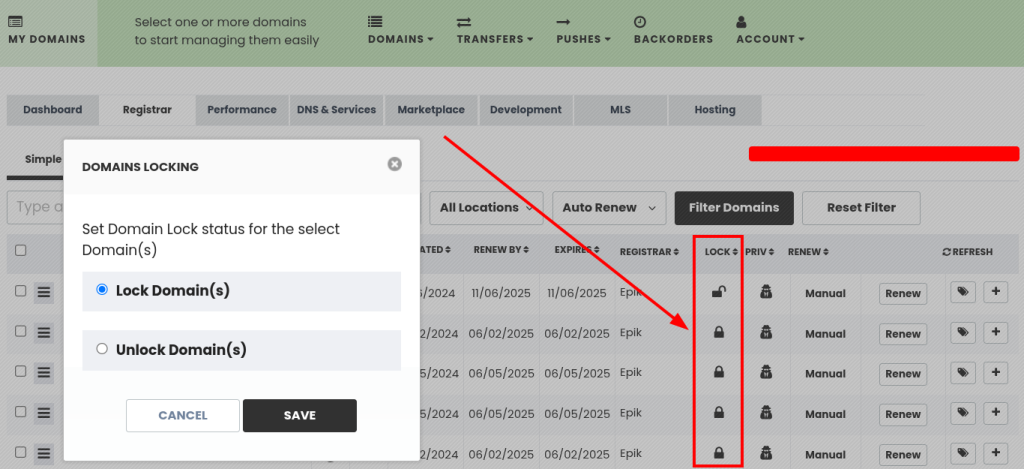Some conditions must be met to transfer your domain to or out of Epik, and they may differ depending on its extension, as some ccTLDs have different policies for transferring domains.
This article describes the prerequisites for a successful transfer for all gTLDs and ngTLDs (and most ccTLDs).
60-Day Domain Registration Lock
First, it’s essential that more than 60 days have passed since your domain registration date, and that it has been in the same registrar for more than 60 days. This assures your domain is eligible to exit the current registrar.
Per ICANN, domains that are less than 60 days old or have been transferred from another registrar within the last 60 days cannot be transferred out.
The Domain MUST be Unlocked
The next step is unlocking the domain with your registrar. Some registrars have two locks, a registrar lock and a user lock. Both of them need to be unlocked for your domain to be transferred successfully. You can usually find your lock status in your domain portfolio, it’s typically assigned either a Lock Icon or a Locked/Unlocked Status.
Within the Epik UI, you can lock/unlock your domains by clicking the lock icon itself as seen in the screenshot below..

Note: In some registrars, there may be additional approvals or conditions to be met. An example would be GoDaddy’s Domain Protection having to be downgraded to Basic.
Valid Authorization Code
The Authorization Code, or AuthCode/EPP Code, is an alphanumeric code assigned for each domain, which works as a password to transfer domains between registrars. This Authorization Code is set and given to you by your current registrar, and then provided to your new registrar to process the domain transfers.
Note: Make sure to retrieve the authorization code last, as some registrar’s security measures reset the Authorization Code automatically when unlocking the domain name, or it can result in an invalid code.

